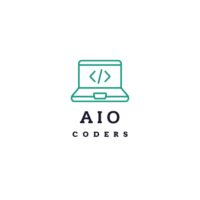Introduction
Cloud adoption has raced ahead of many organizations to secure it. Development teams spin up new SaaS instances in minutes. DevOps pipelines deploy code dozens of times per day. Employees jump between corporate laptops, home PCs, and mobile devices without a second thought. This speed is a business boon but widens the attack surface faster than traditional security teams can react.
Complicating matters, responsibility is shared. Cloud-service providers secure the underlying infrastructure, but customers must still harden identities, data, and workloads running on top. Misunderstanding that boundary fuels a steady stream of headline breaches caused not by sophisticated zero-days, but by misconfigured settings, overly permissive roles, and forgotten APIs.
Our goal is to replace hype with clarity. We’ll walk down each control layer- identity, network, data, workload, monitoring, and governance- showing how they interlock to create a resilient posture. By the end, you’ll have a practical blueprint to embed security directly into DevSecOps pipelines rather than bolting it on after deployment.
Identity and Access Management (IAM): The First Control Layer
The overwhelming majority of cloud breaches trace back to stolen or over-privileged credentials, making IAM the logical starting point for any defence strategy. Today, that means phishing-resistant multi-factor authentication, such as FIDO2 security keys or modern passkeys, for every human and machine account with console access.
Equally important is least-privilege design. Role-based and attribute-based access controls limit blast radius by granting users only the permissions they need and nothing more. That’s said than done, especially when development teams favor convenience, but it’s non-negotiable in regulated industries.
As you mature, swap long-lived API keys for short-lived, just-in-time tokens that expire automatically. This shift reduces credential reuse and aligns with the principle highlighted in understanding cloud security for data protection, where identity controls form the bedrock of every other cloud-security mechanism.
Privileged tasks- database migrations, network re-configs, or emergency patchwork- deserve protection. Implement workflows that elevate permissions only for the duration of a task, record the session for audit purposes, and automatically revoke privileges when the window closes. The NIST SP 800-53 guidelines recommend the same pattern for federal workloads, and their advice scales well to the private sector.
Network Protection in the Cloud
In the data-centre era, a crunchy firewall perimeter surrounded a soft interior. The cloud flips that model: every subnet is potentially exposed to the internet, and east-west traffic between microservices dwarfs ingress traffic. Security there, before pivots from castle-and-moat to granular, anywhere-edge controls.
Start with logically isolated Virtual Private Clouds (VPCs) and subnets. Keep production, staging, and testing environments separate, and use network ACLs to ensure traffic only flows where it should for replacetunnels with Zero-Trust Network Access (ZTNA). Instead of dumping users onto the whole network, ZTNA brokers access to specific apps only after confirming identity, device posture, and risk.
Inside the cloud, route service-to-service calls through a mesh that enforces mutual TLS. That keeps tokens, secrets, and data out of view, even if a malicious actor achieves a foothold elsewhere. Finally, distribute web-application firewalls (WAFs) and next-gen cloud firewalls as code via your CI/CD pipeline; rules and signatures should version-lock right alongside infrastructure templates.
The AWS Well-Architected Framework network pillar provides design patterns you can adapt to most public-cloud platforms.
Data Protection Mechanisms
Protecting data hinges on two core principles: keep prying eyes away in transit and at rest, and ensure that authorised processes can still use the data securely. Encryption in transit is table stakes- TLS 1.3 with modern ciphers, strict certificate-rotation policies, and HSTS for web apps. Encryption at rest should leverage cloud-native Key Management Services (KMS) or customer-managed Hardware Security Modules (HSMs) so key material never sits unprotected in a code repo.

Consider tokenization or format-preserving encryption for analytic workloads that require live processing of sensitive values, and consider techniques that maintain data shape, practical for reports, while hiding the raw secrets underneath. Pair them with object-lock and bucket-versioning; immutable backups are a lifesaver when ransomware creeps into cloud storage.
Workload and Application Security
Security shifts left in the build pipeline. Infrastructure-as-Code templates and container images should pass policy scans before they reach production. Sign artefacts, generate Software Bills of Materials (SBOMs), and fail builds that include known CVEs.
At runtime, lean on lightweight eBPF or agent-based tools to enforce syscall policies and detect anomalous behaviour. Serverless functions need special care: minimise granted roles, limit concurrency to throttle abuse, and hard-cap execution time. For highly sensitive computations, think healthcare analytics or encrypted database joins, joins-confidential-computing instances keep data isolated even from the host hypervisor.
Microsoft’s Azure Security Documentation offers step-by-step guides for hardening containers, VMs, and serverless workloads; the patterns also translate well to Google Cloud and Oracle Cloud.
Continuous Posture Management & Threat Detection
Cloud environments change by the hour, so point-in-time audits are never enough. Cloud Security Posture Management (CSPM) tools monitor for misconfigured buckets, excessive IAM roles, open management ports, and alert in near real time. Cloud-Native Application Protection Platforms (CNAPP) go further by correlating build-time and runtime signals. If a container flagged during a scan later opens an unexpected outbound connection, CNAPP surfaces that as a joined alert instead of two noisy, separate events.
An extended-detection-and-response pipeline (XDR) stitched into cloud API logs catches credential stuffing and lateral-movement attempts. Sprinkle in deception: honey-tokens or decoy storage buckets that silently phone home when touched, giving responders a head start.
Automated Response & Orchestration
Speed matters once an attacker lands. Automate high-confidence responses so human analysts can focus on ambiguous threats. Impossible-travel logins? Revoke the token and force MFA. A newly created public S3 bucket? Flip ACLs to private and notify the owner. Suspicious CPU spikes in a fresh container? Quarantine the pod and block its egress route.
These playbooks live as code alongside Terraform modules, ensuring each region or account gets the same guardrails. Over time, machine-learning classifiers can refine thresholds and reduce false positives.
Governance, Risk, and Compliance Integration
Auditors increasingly demand real-time evidence rather than screenshots. “Comp”iance as code embeds requirements, such as encryption, logging, and separation of duties, directly into IaC templates. Continuous-compliance platforms collect logs, feed into immutable stores, and generate attestation reports on demand.

Translate technical findings into risk language executives understand: “80 p”tf PII buckets now enforce object-lock” res” nates better than “S3 V”rsioning flag enabled. The dashboards that overlay regulatory citations with dollar-value risk help leadership prioritise remediation funding.
Future-Proofing Cloud Security
Cryptography faces a post-quantum shake-up; begin inventorying algorithms and key sizes now. AI will soon tune policies and spot anomalies humans miss, but remember, adversaries weaponise the same models. Edge computing and 5 G will push workloads to micro-PoPs, bringing new latency advantages and security blind spots. Finally, expected that software supply chains, signed artefacts, and attested SBOMs will become table stakes.
Conclusion
Layered cloud defence is less about a single, shiny platform and more about the disciplined interplay of many protective gears. IAM establishes a trustworthy identity perimeter; network segmentation and ZTNA ensure traffic only travels where it should; encryption, tokenisation, and immutable storage guard the data itself; hardened build pipelines and runtime controls keep workloads honest; and continuous posture management plus automation close the loop with rapid detection and response.
When each mechanism is embedded in code, validated continuously, and championed by DevSecOps culture, security shifts from a roadblock to an enabler, empowering teams to ship faster without sacrificing resilience. Master these fundamentals now, and you’ll face tomorrow’s edge-native challenges with confidence rather than crisis.
Frequently Asked Questions
Q1. Does Moving To A Single Cloud Provider Simplify Security?
Not automatically. While vendor tooling can reduce overlap, risk persists through misconfiguration, privileged misuse, and supply-chain dependencies. A multi-layer strategy-identity, network, data, workload-remains essential even in a single-cloud estate.
Q2. How Often Should We Rotate Cloud Access Keys?
Ideally, never replace long-lived keys with short-lived, just-in-time tokens delivered by an identity broker. If keys are unavoidable for legacy apps, rotate them every 90 days or sooner per compliance mandates.
Q3. What Is The Quickest Win For Small Teams Starting Cloud-Security Hardening?
Enable phishing-resistant MFA for all console and SSH access, then turn on default encryption and logging for every storage service. These steps mitigate the two most common breach vectors- stolen credentials and exposed data- without significant architectural changes.

